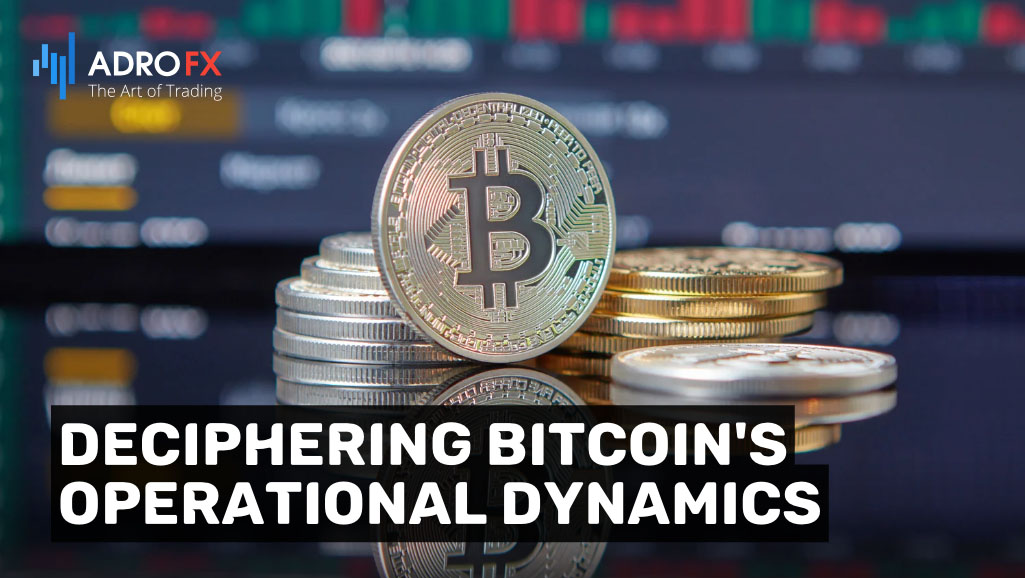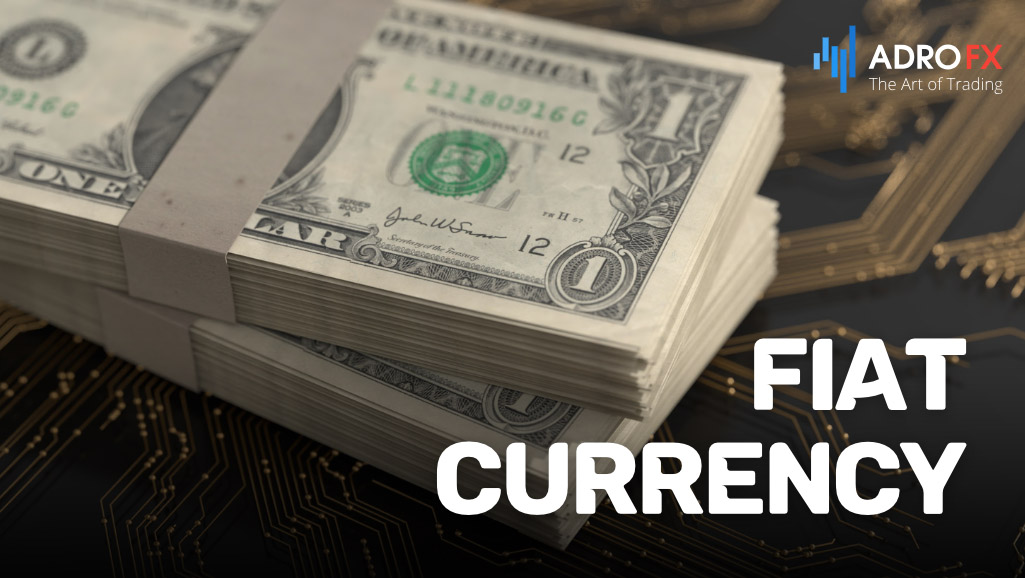Unveiling Bitcoin's Backbone: Exploring What Backs the World's First Cryptocurrency

Venturing into the realm of digital finance, Bitcoin emerges as a pioneering force, heralding the dawn of cryptocurrencies. Embodied within its decentralized framework lies a transformative concept, one that challenges the very essence of traditional monetary systems. Since its inception in 2009, under the cryptic guise of Satoshi Nakamoto, Bitcoin has disrupted conventional paradigms, offering a decentralized alternative to intermediaries like banks and governments. At its core, Bitcoin represents more than just a digital currency; it embodies a revolutionary ethos, empowering individuals with financial sovereignty and autonomy.
Unveiling Bitcoin: A Decentralized Digital Currency
Bitcoin, hailed as the pioneer of cryptocurrencies, represents a digital or virtual currency functioning on a decentralized peer-to-peer network, famously termed the blockchain. Emerging in 2009 under the enigmatic pseudonym Satoshi Nakamoto, Bitcoin redefined monetary paradigms by introducing a decentralized framework that bypasses intermediaries like banks or governments.
At its essence, Bitcoin serves as a digital medium of exchange facilitating secure peer-to-peer transactions devoid of central oversight. Transactions transpire on the Bitcoin network and are chronologically documented on a public ledger, the blockchain, upheld by a network of computers, or nodes.
A hallmark feature of Bitcoin lies in its capped supply. Unlike fiat currencies susceptible to infinite printing by central authorities, Bitcoin adheres to a strict maximum supply of 21 million coins, rendering it a deflationary asset. This scarcity is ingrained in the Bitcoin protocol and enforced via the process of mining.
Mining constitutes the mechanism through which new Bitcoins are minted and transactions are validated on the blockchain. Miners wield robust computers to tackle intricate mathematical puzzles, reaping rewards in the form of freshly minted Bitcoins. This endeavor not only fosters new coin creation but also fortifies network security and preserves blockchain integrity.
Bitcoin transactions are pseudonymous, with parties identified solely by cryptographic keys rather than personal identifiers. Users employ public and private keys for transaction validation and ownership assertion, ensuring transactional security and privacy.
Bitcoin's decentralization, limited supply, and pseudonymous transactions have propelled its adoption as a store of value, medium of exchange, and hedge against inflation. It garners acceptance across individuals, enterprises, and institutional investors as a digital counterpart to traditional currencies and a prospective investment avenue.
However, despite its ascendancy, Bitcoin remains a volatile and speculative asset, subject to market vagaries, regulatory shifts, technological advancements, and macroeconomic trends. Investing in Bitcoin demands judicious scrutiny and risk assessment.

Deciphering Bitcoin's Operational Dynamics
Bitcoin operates via an amalgamation of innovative technologies and decentralized network protocols. Delving into its mechanics entails grasping fundamental concepts like blockchain technology, mining, transactions, and cryptography:
Blockchain Technology: Bitcoin transactions are logged on the blockchain, a decentralized ledger housing a transparent record of all network activities. Each block contains transaction data, sequentially appended to the chain, ensuring transparency and integrity.
Decentralized Network: The Bitcoin network eschews central authority in favor of decentralized governance, leveraging a network of nodes for transaction validation, blockchain maintenance, and network security. Decentralization bolsters resilience against censorship and manipulation.
Mining: Miners employ computational power to validate transactions and append new blocks to the blockchain, receiving Bitcoin rewards as incentives. Mining safeguards network integrity and averts fraudulent activities.
Transactions: Bitcoin transactions involve the transfer of value between users, cryptographically authenticated to ensure ownership and legitimacy. Transactions are broadcasted, verified, and added to the blockchain, furnishing an immutable record of ownership.
Cryptography: Cryptography safeguards the Bitcoin network and transactions, furnishing privacy and integrity. Public-key cryptography generates cryptographic key pairs, facilitating secure transactions without divulging sensitive data.
In summation, Bitcoin emerges as a decentralized digital currency empowered by blockchain technology, mining, secure transactions, and cryptographic principles. Its innovative design fosters widespread adoption, presenting a decentralized alternative to conventional monetary systems.
Bitcoin Mining
Bitcoin mining is the intricate process through which specialized computers, known as miners, generate new Bitcoins as a reward for solving complex mathematical equations. Essentially, new Bitcoins are offered as an incentive for confirming transactions on the Bitcoin network.
To delve into the details, a transaction is considered confirmed when a computer successfully calculates the correct hash value for a new block. These transactions waiting to be confirmed are then compiled onto this newly mined block. This mining operation demands significant electricity, time, and computational resources to succeed, with transactions typically being confirmed within a few minutes. This process, known as proof-of-work, plays a crucial role in attributing value to Bitcoin.
The term "work" in mining underscores the substantial computing power required for these operations. Understanding the proof-of-work mechanism is pivotal as it sheds light on why Bitcoin holds value.

Fiat Currency
Fiat currency, or simply fiat money, refers to currency declared legal tender by a government. It's essentially government-issued currency not backed by any physical asset. A classic example is the US Dollar (USD), whose value is essentially derived from the government's decree and the trust of its users. Without this backing, fiat currency would lack value.
The value of fiat currencies is largely dictated by governments, making it a form of centralized currency. Governments regulate the issuance of currency, controlling both its circulation and the policies governing its use.
Historically, currencies were backed by physical assets like gold, silver, or bronze, before transitioning to fiat currencies in the 1800s. The intrinsic value of coins stemmed from their composition of precious metals, furthering the notion of currency being backed by a tangible commodity.
Fiat currencies serve dual purposes: as a medium of exchange for transactions and as a store of value. While they generally maintain their value over time, fluctuations occur due to shifts in supply and demand dynamics.
However, fiat currencies are susceptible to depreciation and erosion of value over time, especially in cases of government instability or excessive money printing leading to inflation. This underscores the importance of understanding both fiat and cryptocurrency systems in navigating the complexities of modern economies.
Why Bitcoin Is the Solution to Fiat Currency's Greatest Challenge
In recent times, there has been a surge in discussions surrounding why Bitcoin might offer a superior alternative to fiat currencies. With the inevitable mass adoption of Bitcoin and other cryptocurrencies looming on the horizon, enthusiasts argue that Bitcoin addresses some of the most pressing issues faced by traditional currencies.
One of the primary issues tackled by Bitcoin is centralization. Unlike fiat currencies, which are backed by governments, Bitcoin operates independently of any central authority. In the event of a government collapse or financial crisis, fiat currencies lose their value, whereas Bitcoin remains resilient.
Furthermore, excessive printing of fiat money by governments can lead to inflation and subsequent devaluation of the currency over time. Bitcoin, on the other hand, is immune to inflation due to its decentralized nature and the fixed supply limit of 21 million Bitcoins, as envisioned by Satoshi Nakamoto, its pseudonymous creator(s).
The scarcity of Bitcoin contributes significantly to its value proposition. With a capped supply, Bitcoin is inherently scarce, akin to precious commodities like gold. This scarcity ensures that Bitcoin retains its value over time, making it an attractive store of wealth.

What Gives Bitcoin Its Value?
Presently, Bitcoin reigns as the world's largest cryptocurrency, with a single Bitcoin valued at over $66,000. The remarkable growth of Bitcoin, especially since 2019, positions it as a potential mainstream currency in the near future.
Bitcoin's value is intricately linked to the principles of supply and demand. As the rate of Bitcoin's supply growth lags behind its increasing demand, its value continues to appreciate. This stands in contrast to fiat currencies, which face devaluation due to excessive money printing by governments.
Several factors contribute to the success of a currency, including:
Scarcity: Bitcoin's limited supply and diminishing issuance rate ensure its scarcity, bolstering its value proposition. This stands in stark contrast to fiat currencies, which are subject to inflationary pressures.
Divisibility: Bitcoin's divisibility enables seamless transactions, with one bitcoin divisible into 100 million units, known as satoshis. This divisibility facilitates microtransactions, enhancing Bitcoin's utility as a medium of exchange.
Portability: Bitcoin's digital nature makes it highly portable, allowing for instantaneous and secure transfers across borders. Unlike traditional currencies or physical commodities like gold, Bitcoin can be easily transported and transacted with, regardless of geographical location.
In essence, Bitcoin's unique characteristics, including its scarcity, divisibility, and portability, position it as a formidable contender against fiat currencies. Its potential to serve as a global currency hinges on its ability to address the shortcomings of traditional monetary systems, paving the way for widespread adoption in the digital age.
The Foundation of Bitcoin's Value
In essence, the backbone of Bitcoin's value lies in the collective belief and confidence vested in it by individuals. Bitcoin's worth is upheld by the trust and faith of its proponents, those who perceive it as a viable alternative to traditional currencies. If you're reading this, chances are you're part of this community.
Following its inception, a multitude of individuals embraced the concept of a decentralized currency, adopting Bitcoin for their everyday transactions. They placed their trust in Bitcoin's inherent value, recognizing its potential superiority over conventional fiat currencies. To these early adopters, Bitcoin represented not just another form of money, but a fundamentally better one.
This cohort comprises various stakeholders, including investors, miners, and enthusiasts, who utilize Bitcoin to facilitate their financial endeavors.
Over time, the number of Bitcoin adherents has steadily grown. As of November 2021, the global count of Bitcoin users stands at an impressive 78 million, a figure derived from the tally of unique wallets on the Bitcoin network. Since 2019, Bitcoin has witnessed a twofold surge in its user base, with experts forecasting even more substantial expansion in the coming years.
As the ranks of Bitcoin proponents swell, the currency's resilience is reinforced. Notably, prominent brands like Meta, Microsoft, Shopify, Starbucks, and Etsy have embraced Bitcoin, integrating it into their payment ecosystems. Moreover, certain nations, such as El Salvador, have granted Bitcoin legal tender status, further legitimizing its role in global finance.
Should this trajectory persist, with continued belief and utilization of Bitcoin for transactions worldwide, it is poised to transition into mainstream acceptance. However, this confidence in Bitcoin is not unfounded; it stems from a nuanced comprehension of its mechanics and value proposition, as well as an acknowledgment of its superiority over fiat currencies.
In tandem with the burgeoning popularity of cryptocurrencies, we witness the proliferation of cryptocurrency exchanges. These platforms facilitate the trading of various cryptocurrencies, including Bitcoin, serving as conduits for individuals to acquire and dispose of digital assets. As participation in Bitcoin trading grows via these exchanges, so too does the currency's valuation, bolstered by heightened market activity.
Conclusion
As we navigate the intricate landscape of modern finance, Bitcoin stands as a beacon of innovation and resilience, poised to redefine the global monetary landscape. With its decentralized architecture, capped supply, and pseudonymous transactions, Bitcoin presents a compelling solution to the inherent challenges of fiat currencies. Embraced by a burgeoning community of believers and institutional stakeholders alike, Bitcoin transcends mere speculation to embody a tangible manifestation of trust and confidence in the digital age. As the journey of Bitcoin unfolds, it promises to reshape the future of finance, ushering in an era of financial inclusion and empowerment for all.
About AdroFx
Established in 2018, AdroFx is known for its high technology and its ability to deliver high-quality brokerage services in more than 200 countries around the world. AdroFx makes every effort to keep its customers satisfied and to meet all the trading needs of any trader. With the five types of trading accounts, we have all it takes to fit any traders` needs and styles. The company provides access to 115+ trading instruments, including currencies, metals, stocks, and cryptocurrencies, which make it possible to make the most out of trading on the financial markets. Considering all the above, AdroFx is the perfect variant for anyone who doesn't settle for less than the best.










